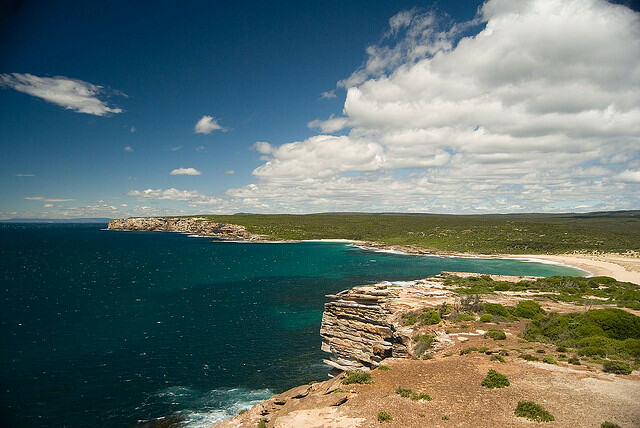Climate scientists studying the impact of changing wave behaviour on the world’s coastlines are reporting a likely decrease in average wave heights across 25 per cent of the global ocean.
In some of the first climate simulations of modelled wave conditions they also found a likely increase in wave height across seven per cent of the global ocean, predominantly in the Southern Ocean.
A lone surfer. Image: Flickr/stevenworster
Lead author, Dr Mark Hemer, said that 20 per cent of the world’s coastlines are sandy beaches which are prone to natural or man-made changes. It is estimated that 10 per cent of these sandy coasts are becoming wider as they build seawards, 70 per cent are eroding and the remaining 20 per cent are stable. Around 50 per cent of Australia’s coast is sand.
“Waves are dominant drivers of coastal change in these sandy environments, and variability and change in the characteristics of surface ocean waves (sea and swell) can far exceed the influences of sea-level rise in such environments.
“If we wish to understand how our coasts might respond to future changes in climate then we need to try and understand how waves might respond to the projected changes in global atmospheric circulation seen as shifts in storm frequency, storm intensity and storm tracks,” Dr Hemer stated.
Dr Hemer explained that coastal impacts of climate change studies have predominantly focused on the influence of sea-level rise and, until now, not focussed on how changing wave conditions will impact the coastal zone in a changing climate.
He said sea-level rise is likely to have considerable influence along much of the world’s coastlines. However, with such poor understanding of how changes in waves and other coastal processes will also influence shoreline position, it is difficult to attribute a level of future risk to the coast under a warmer climate.

The study compared results from five research groups from Australia, the United States, Japan, Europe and Canada. Each group used different modelling approaches to develop future wave-climate scenarios.
“While we find agreement in projected change in some parts of the world’s oceans, considerable uncertainty remains. We’re continuing to quantify the dominant sources of variation with the latest generation of climate models which will be used in the up-coming Intergovernmental Panel on Climate Change reports,” Dr Hemer said.
He said climate is one of several mostly human-driven factors influencing coastline change. These findings are derived from a study which seeks to understand potential impacts on coasts from climate change driven wind-wave conditions. The study will be published in the print edition of the journal Nature Climate Change on 25 April.
Media: Craig Macaulay P: 03 6232 5219 M: 0419 966 465 Email: Craig.Macaulay@csiro.au



31st July 2013 at 7:33 am
Hey thanks for using my image, so much of what we are doing to our planet right now makes me pretty sad – coastline & climate change is always present in some ways but the fact that we’re accelerating it by our own human selfishness really gets my goat.